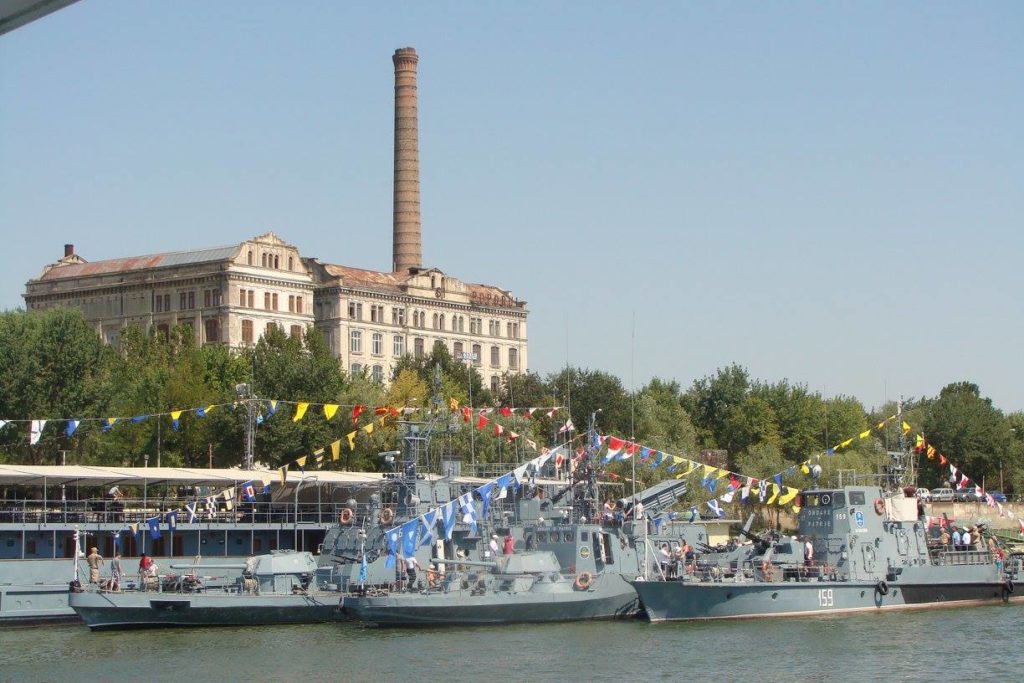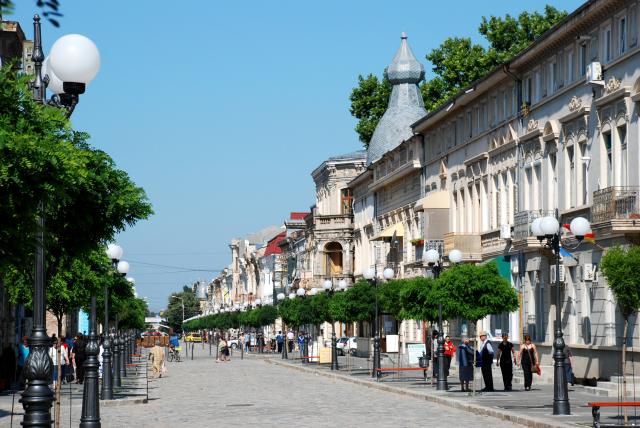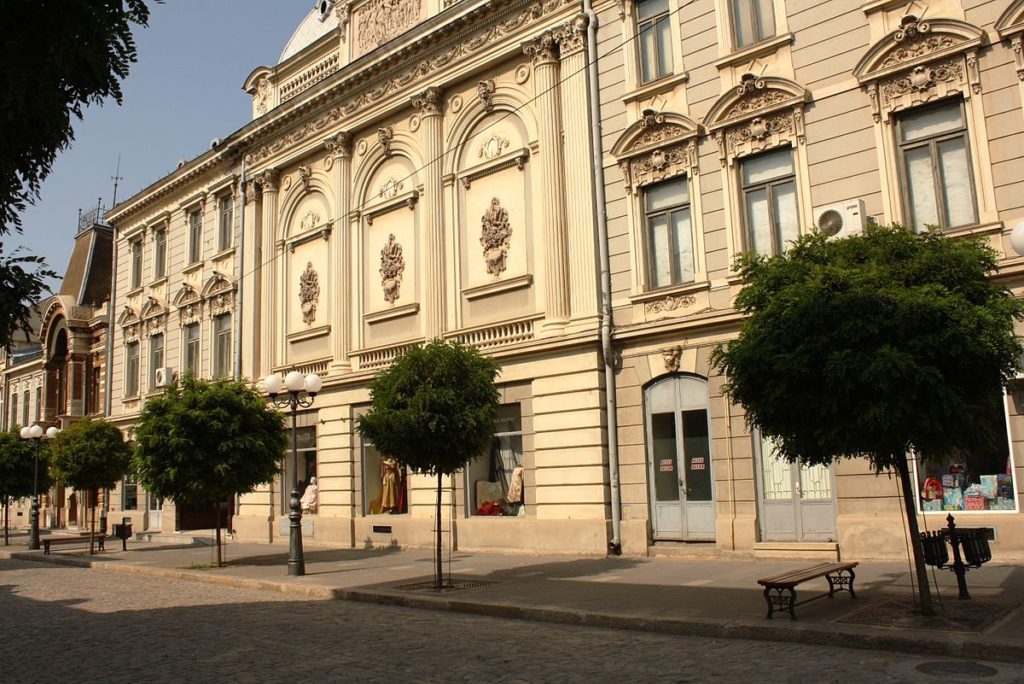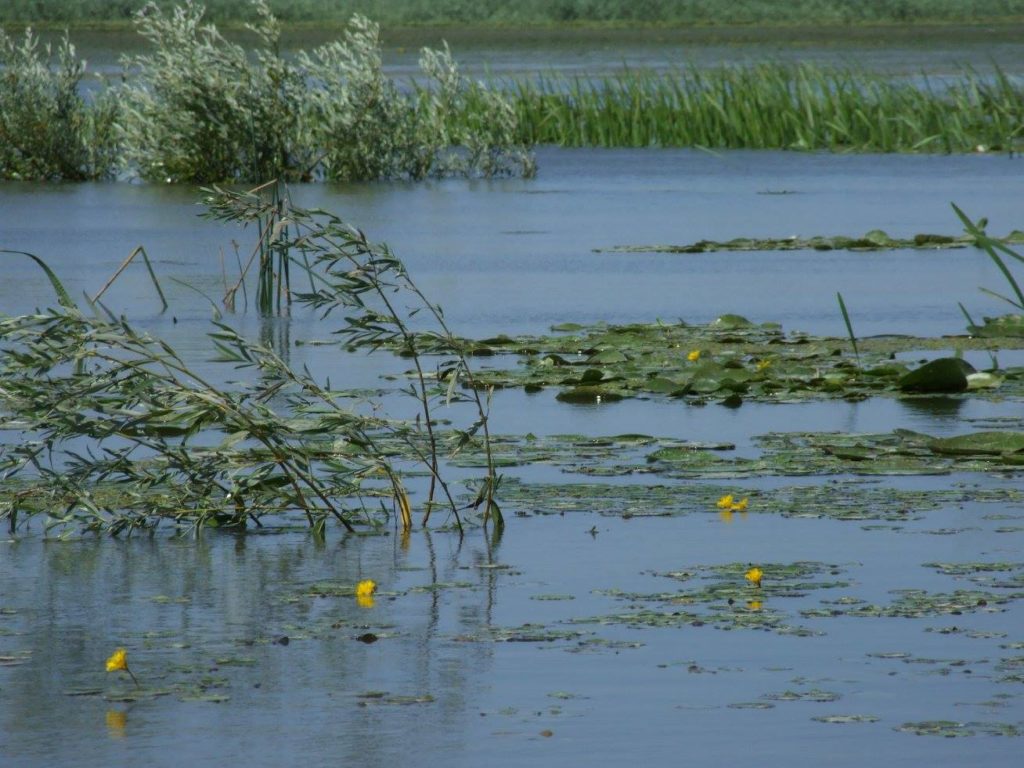Romania travel: Five reasons to visit Brăila

Brăila might not be among the first choices to come to mind for a holiday in Romania but this port city on the Danube has a multicultural history and plenty of tourist potential: historical sites, beautiful architecture and a nearby nature park.
Take a walk along the riverfront
A port city for centuries, Brăila saw a period of great development towards the end of the 19th century and the beginning of the 20th. It was then an important port for most of the merchandise coming in and out of Romania, and had a Grain Exchange, where the price of cereals was set.
 The Violattos Mill Photo source: Muzeul Carol I Brăila Facebook Page
The Violattos Mill Photo source: Muzeul Carol I Brăila Facebook PageA walk in the area will reveal some traces of those past times. Among them are the recently revamped building of the former River Station (Gara Fluvială), serving at the time hundreds of passengers travelling on board of steam ships, and the Violattos Mill, one of the largest steam-powered mills in Eastern Europe when it opened. Built by engineer Anghel Saligny, who also designed the Cernavodă bridge over the Danube, the flour mill was the property of the Greek Violattos family. The six-level building had large warehouses and access to the railway and the port. Leading to the riverfront is the Danube Esplanade, made up of an ensemble of eye-catching fountains, among which the Kinetic Fountain (Fântâna Cinetică) is the star.
Explore the old town
The old center of Brăila, reminding visitors of the city’s prosperous times at the turn of the past century, has been declared a historical monument. Spreading on over 160 hectares, it encompasses numerous beautiful buildings, part of them in need of revamping.
 The old part of the city Photo: primariabraila.ro
The old part of the city Photo: primariabraila.roTraian Square dates back to 1833, and used to be called the Rally Square, after the name of the owner of the Maria Filotti Theater, an important edifice in the city and one of the oldest theaters in the country. The square accommodates the Saint Archangels Michael and Gabriel Church, particular because it is one of the few Orthodox churches in the country without steeples. This happened because the church used to be a mosque, another trace of the city’s multicultural history as Brăila used to be a part of a raya (raia) administrative unit under the Ottoman Empire, until the beginning of the 19th century.
 Maria Filotti Theater Photo: Krysthy/Wikipedia
Maria Filotti Theater Photo: Krysthy/WikipediaThe Great Garden of Brăila, a public park set up in the 19th century, with its landmark clock, is also worth seeing, alongside the Carol I Brăila Museum, housed in the former Armelin Casino and the Maria Filotti Theater, which in time hosted performances of artists such as actress Sarah Bernhardt and composer George Enescu. The Greek Church, a reference to the once large Greek community in the city, is another landmark.
The catacombs
Not open for tourists, the catacombs (hrube in Romanian) are the remains of a defensive system built under the Turkish occupation of Brăila. They served for the underground transport of various goods to the river. The local authorities announced in the past plans to revamp them and introduce them in the tourist offering but this has not happened yet. In parts of the city, small signs alert of their presence as historical sites. The area of the Old Town is where some of the catacombs have been identified, and some of them are found beneath private properties.
Trace the footsteps of the personalities born here
Brăila houses the memorial houses of writer Panait Istrati and of literary historian and critic Perpessicius, both born there. Istrati, who also wrote in French, is often linked to French author Romain Rolland. The French author, who was awarded the Nobel Prize for Literature in 1915, wrote the preface for Istrati’s Kira Kiralina story, when published in 1923 in the magazine Europe. Today, the only French bookstore in Bucharest is named after Istrati’s character- Librairie Kyralina.
Another author born in Brăila was Mihail Sebastian. His 1934 novel For 2000 Years (De două mii de ani) was published in English in 2016. The novel, which speaks of the rise of anti-Semitism at the time, was first published in Romania with a preface by philosopher and journalist Nae Ionescu, a mentor of Sebastian, also born in Brăila. Sebastian also authored the 1935 novel The Acacia Town (Oraşul cu salcâmi). Brăila used to carry the nickname of “acacia town” because of the many trees of this species it had. This year, some 650 acacia trees were planted at the outskirts of the city. Romanian soprano of Greek origin Hariclea Darclée was also born in Brăila, as was biologist and physician Ana Aslan, a pioneer of gerontology in Romania, among a longer list of local personalities.
The Small Wetland of Brăila
 The Small Wetland of Braila Photo: RNP Romsilva Administratia Parcului Natural Balta Mica a Brailei Facebook Page
The Small Wetland of Braila Photo: RNP Romsilva Administratia Parcului Natural Balta Mica a Brailei Facebook PageThe Small Wetland (Balta Mică) of Brăila Nature Park is considered a miniature Delta, of rich biodiversity. It is also a Natura 2000 site and a Ramsar (Ramsar Convention on Wetlands) site. Visitors can access the area, where the legendary local outlaw Terente is said to have had many hiding places, by boat. Trips on reed-covered channels, through water lilies and rich vegetation await, as well as the opportunity to spot the wildlife. More on the available tourist routes here.
How to get there:
By car, Brăila is 196 km east of Bucharest on the E60 and DN2B. By train, a trip from Bucharest takes more than 3 hours, with both CFR Călători and private operator Transferoviar Călători offering rides. The city does not have an airport.
editor@romania-insider.com
(Opening photo: primariabraila.ro)












